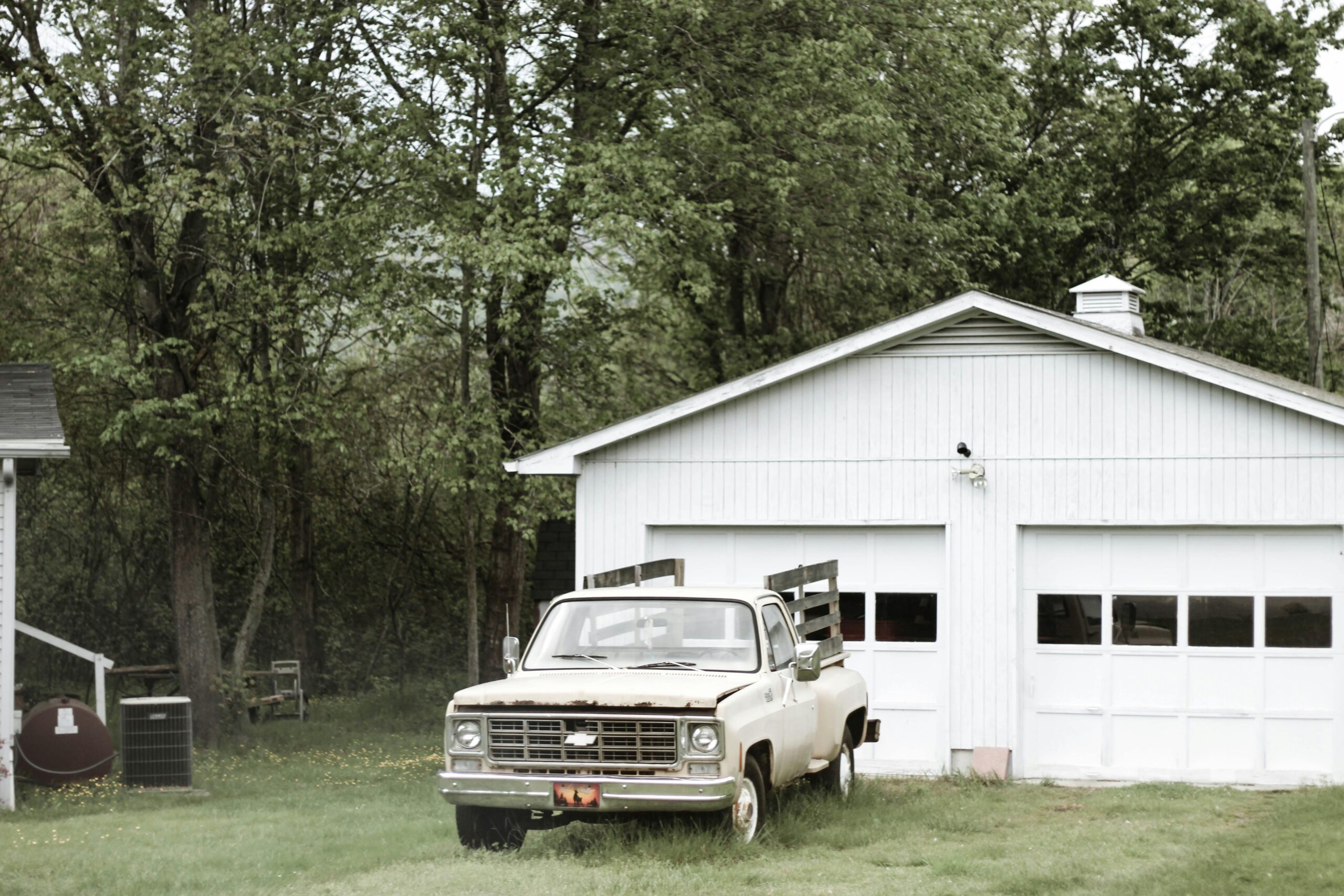There’s something undeniably magical about living in one of the Phoenix Historic Districts. Whether you’re in Roosevelt, Encanto-Palmcroft, or the Coronado Historic District, every street feels like a walk through time. These beautiful older structures often come with cracks, crawlspaces, original wood, and all the cozy hideout pests could ever want. But don’t worry. In this guide, we’ll explore the best pest control tips for Phoenix Historic District homes, share real stories from homeowners, and help you protect your space without compromising its charm.
Why Older Homes in Phoenix Attract More Pests
Let’s start with the obvious: older homes weren’t built with modern pest prevention in mind. Homes in areas like Willo or F.Q. Story were constructed long before weather stripping, insulated attics, or sealed crawlspaces were a thing.
Here are a few reasons pests love historic homes:
- Cracks in foundation or walls from years of settling
- Unsealed vents, chimneys, or eaves
- Wood features that attract termites and carpenter ants
- Crawlspaces and basements that stay cool and dark
- Gaps around old windows, baseboards, and doors
Plus, mature landscaping, think giant shade trees and vintage rose bushes makes a perfect exterior habitat for scorpions, ants, and rodents.
“They Were Coming Through the Baseboards”
“Our 1930s home in the Encanto-Palmcroft District is everything I wanted, except for the roaches. They were coming in from behind the baseboards and even inside the old cabinetry. We didn’t want to ruin the charm with heavy-duty chemicals, so we called S Pest
There’s something undeniably magical about living in one of the Phoenix Historic Districts. Whether you’re in Roosevelt, Encanto-Palmcroft, or the Coronado Historic District, every street feels like a walk through time. The brick facades, vintage woodwork, and arched doorways, they’re pieces of history, and owning one of these homes is both a joy and a responsibility.
But here’s the not-so-magical truth: pests love old houses.
And if you’re dealing with pest issues in your historic home, you’re not alone. These beautiful older structures often come with cracks, crawlspaces, original wood, and all the cozy hideout pests could ever want.
But don’t worry. In this guide, we’ll explore the best pest control tips for Phoenix Historic District homes, share real stories from homeowners, and help you protect your space without compromising its charm.
Why Older Homes in Phoenix Attract More Pests
Let’s start with the obvious: older homes weren’t built with modern pest prevention in mind. Homes in areas like Willo or F.Q. Story were constructed long before weather stripping, insulated attics, or sealed crawlspaces were a thing.
Here are a few reasons pests love historic homes:
- Cracks in foundation or walls from years of settling
- Unsealed vents, chimneys, or eaves
- Wood features that attract termites and carpenter ants
- Crawlspaces and basements that stay cool and dark
- Gaps around old windows, baseboards, and doors
Plus, mature landscaping, think giant shade trees and vintage rose bushes makes a perfect exterior habitat for scorpions, ants, and rodents.
“They Were Coming Through the Baseboards”
“Our 1930s home in the Encanto-Palmcroft District is everything I wanted, except for the roaches. They were coming in from behind the baseboards and even inside the old cabinetry. We didn’t want to ruin the charm with heavy-duty chemicals, so we called Spark Pest Control. They used a non-invasive gel bait and sealed up entry points. Total game changer.”
– Rachel M., Encanto homeowner
Most Common Pests in Phoenix Historic District Homes
Let’s talk about what you’re actually dealing with. These are the pests we most often see in historic neighborhoods across central Phoenix:
1. Termites
Probably the biggest threat to older homes. Subterranean termites are common throughout Arizona, and vintage wood structures are a dream come true for them.
Signs to watch for:
- Mud tubes on foundation walls
- Bubbling paint or hollow wood
- Discarded wings near windows
Tip: Get an annual termite inspection from a licensed local provider. Seriously, it’s not optional here.
2. Roof Rats
Historic areas like Roosevelt and Willo often have lush trees and alley access, which are perfect for roof rats. These guys are sneaky, and they’ll move into your attic fast.
What to look for:
- Droppings in attic spaces or near baseboards
- Noises in walls at night
- Chewed wires or fruit in the yard
Tip: Trim tree limbs away from the roof and have a pro install rodent-proof mesh in vents and eaves.
3. Scorpions
Not as common downtown as they are in Ahwatukee or North Scottsdale, but bark scorpions still make appearances in older homes, especially in shaded, block-wall-lined yards.
They get in through:
- Tiny foundation cracks
- Gaps around pipes and door frames
- Wall voids behind baseboards
Solution: Blacklight sweeps at night, sealing entry points, and perimeter treatments are key.
4. Cockroaches
The most persistent pest in Phoenix. Older homes with vintage kitchens and crawlspaces are prime real estate for German and American cockroaches.
Look out for:
- Activity near drains, under sinks, or in cabinets
- Droppings that resemble coffee grounds
- A musty odor near infestation sites
Tip: Avoid using over-the-counter sprays. You need gel bait, dusts, and professional-grade treatments for a real solution.
5. Carpenter Ants & Beetles
Any wooden structure that has been exposed to moisture is at risk. These insects can cause serious damage similar to termites.
Warning signs:
- Wood shavings around baseboards
- Sawdust-like material near window frames
- Clicking or tapping noises inside walls
What Makes Pest Control Tricky in Historic Homes?
Here’s where things get interesting. You can’t just go in with foggers and foam sealant. These homes require a delicate touch.
Historic preservation restrictions may limit what changes you can make to the home’s exterior or interior structure. For example:
- You might not be allowed to replace the original wooden windows.
- Drilling into exterior brick for rodent exclusion could be a no-no.
- Demolishing parts of the foundation to access termite colonies might require permits.
That’s why working with a Phoenix pest control company that understands historic homes is so important.
“We Didn’t Want to Ruin the Charm”
“We’re restoring a 1926 Spanish Colonial in the Coronado District, and the last thing we wanted was ugly caulking all over the original trim. Our pest tech used clear sealants and even tucked mesh behind the woodwork to keep rodents out. It’s possible to do pest control right and preserve the aesthetics.”
– Tom and Mia B., Coronado homeowners
Love Your Historic Home, But Hate the Pests?
You don’t have to sacrifice the charm of your home to stay pest-free.
Owning a home in the Phoenix Historic Districts is about more than square footage. It’s about heritage, character, and legacy. But that doesn’t mean you have to live with pests.
With the right care, expert help, and local knowledge, you can protect your home while preserving its story. Don’t let termites, roaches, or rodents rewrite your history.
Take action today, and keep the past alive, without the pests.
Call a Phoenix pest control expert today who knows how to treat vintage homes with care. Schedule a free inspection and take the first step toward protecting your historic gem.
Frequently Asked Questions
1. Are pest control treatments safe for older homes with vintage materials?
Yes, especially if you use a company that offers non-invasive and eco-friendly options.
2. How often should I get pest control for a historic home?
Quarterly is ideal for general pest prevention. Add annual termite inspections too.
3. Do termites really go after old wood more than new wood?
They’re attracted to moisture-damaged or untreated wood, which is common in older homes.
4. Can I DIY pest control in my historic home?
You can try, but be cautious. Some store-bought products can stain or damage vintage finishes.
5. How do I check for roof rats in an old attic?
Look for droppings, nesting materials, or signs of gnawing. A flashlight and a keen nose help.
6. Are scorpions common in central Phoenix?
Not as much as the outskirts, but yes, they’re creeping into older neighborhoods with shady yards and block fences.
7. Will sealing up holes affect the home’s appearance?
Not if done right. Clear caulk, mesh, and professional exclusion work can preserve aesthetics.
8. What’s the difference between carpenter ants and termites?
Carpenter ants don’t eat wood, but they chew through it to nest. Termites eat it. Both are bad news.
9. Are pest inspections required for historic homes?
Not legally, but highly recommended, especially before buying or renovating.
10. Can pests damage the historical value of my property?
Absolutely. Termites, rats, and water-loving insects can destroy structural and decorative elements beyond repair.
Control. They used a non-invasive gel bait and sealed up entry points. Total game changer.”
– Rachel M., Encanto homeowner
Most Common Pests in Phoenix Historic District Homes
Let’s talk about what you’re actually dealing with. These are the pests we most often see in historic neighborhoods across central Phoenix:
1. Termites
Probably the biggest threat to older homes. Subterranean termites are common throughout Arizona, and vintage wood structures are a dream come true for them.
Signs to watch for:
- Mud tubes on foundation walls
- Bubbling paint or hollow wood
- Discarded wings near windows
Tip: Get an annual termite inspection from a licensed local provider. Seriously, it’s not optional here.
2. Roof Rats
Historic areas like Roosevelt and Willo often have lush trees and alley access, which are perfect for roof rats. These guys are sneaky, and they’ll move into your attic fast.
What to look for:
- Droppings in attic spaces or near baseboards
- Noises in walls at night
- Chewed wires or fruit in the yard
Tip: Trim tree limbs away from the roof and have a pro install rodent-proof mesh in vents and eaves.
3. Scorpions
Not as common downtown as they are in Ahwatukee or North Scottsdale, but bark scorpions still make appearances in older homes, especially in shaded, block-wall-lined yards.
They get in through:
- Tiny foundation cracks
- Gaps around pipes and door frames
- Wall voids behind baseboards
Solution: Blacklight sweeps at night, sealing entry points, and perimeter treatments are key.
4. Cockroaches
The most persistent pest in Phoenix. Older homes with vintage kitchens and crawlspaces are prime real estate for German and American cockroaches.
Look out for:
- Activity near drains, under sinks, or in cabinets
- Droppings that resemble coffee grounds
- A musty odor near infestation sites
Tip: Avoid using over-the-counter sprays. You need gel bait, dusts, and professional-grade treatments for a real solution.
5. Carpenter Ants & Beetles
Any wooden structure that has been exposed to moisture is at risk. These insects can cause serious damage similar to termites.
Warning signs:
- Wood shavings around baseboards
- Sawdust-like material near window frames
- Clicking or tapping noises inside walls
What Makes Pest Control Tricky in Historic Homes?
Here’s where things get interesting. You can’t just go in with foggers and foam sealant. These homes require a delicate touch.
Historic preservation restrictions may limit what changes you can make to the home’s exterior or interior structure. For example:
- You might not be allowed to replace the original wooden windows.
- Drilling into exterior brick for rodent exclusion could be a no-no.
- Demolishing parts of the foundation to access termite colonies might require permits.
That’s why working with a Phoenix pest control company that understands historic homes is so important.
“We Didn’t Want to Ruin the Charm”
“We’re restoring a 1926 Spanish Colonial in the Coronado District, and the last thing we wanted was ugly caulking all over the original trim. Our pest tech used clear sealants and even tucked mesh behind the woodwork to keep rodents out. It’s possible to do pest control right and preserve the aesthetics.”
– Tom and Mia B., Coronado homeowners
Love Your Historic Home, But Hate the Pests?
You don’t have to sacrifice the charm of your home to stay pest-free.
Owning a home in the Phoenix Historic Districts is about more than square footage. It’s about heritage, character, and legacy. But that doesn’t mean you have to live with pests.
With the right care, expert help, and local knowledge, you can protect your home while preserving its story. Don’t let termites, roaches, or rodents rewrite your history.
Take action today, and keep the past alive, without the pests.
Call Spark Pest Control today who knows how to treat vintage homes with care. Schedule a free inspection and take the first step toward protecting your historic gem.
Frequently Asked Questions
1. Are pest control treatments safe for older homes with vintage materials?
Yes, especially if you use a company that offers non-invasive and eco-friendly options.
2. How often should I get pest control for a historic home?
Quarterly is ideal for general pest prevention. Add annual termite inspections too.
3. Do termites really go after old wood more than new wood?
They’re attracted to moisture-damaged or untreated wood, which is common in older homes.
4. Can I DIY pest control in my historic home?
You can try, but be cautious. Some store-bought products can stain or damage vintage finishes.
5. How do I check for roof rats in an old attic?
Look for droppings, nesting materials, or signs of gnawing. A flashlight and a keen nose help.
6. Are scorpions common in central Phoenix?
Not as much as the outskirts, but yes, they’re creeping into older neighborhoods with shady yards and block fences.
7. Will sealing up holes affect the home’s appearance?
Not if done right. Clear caulk, mesh, and professional exclusion work can preserve aesthetics.
8. What’s the difference between carpenter ants and termites?
Carpenter ants don’t eat wood, but they chew through it to nest. Termites eat it. Both are bad news.
9. Are pest inspections required for historic homes?
Not legally, but highly recommended, especially before buying or renovating.
10. Can pests damage the historical value of my property?
Absolutely. Termites, rats, and water-loving insects can destroy structural and decorative elements beyond repair.



